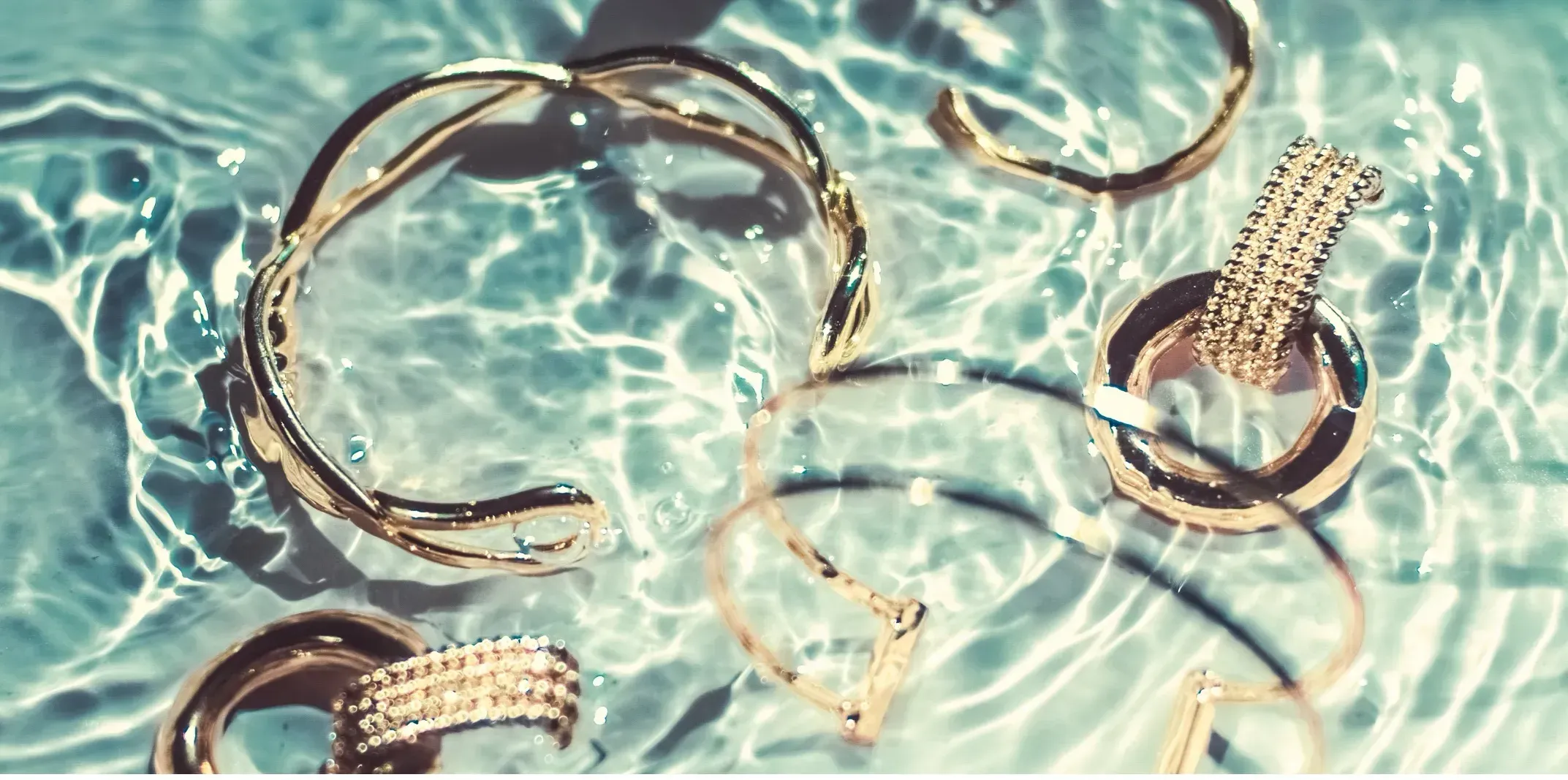
niki 02/08/2025
The Truth About Wearing Jewelry in Salt Water
Waves, Sand & Sparkle: Is It Safe to Wear Jewelry in the Sea?
Nothing complements a sun-kissed glow like shimmering diamond earrings or a sparkling gemstone ring, but before you take a dip in the ocean, you might want to reconsider wearing your favorite pieces. While it’s tempting to accessorize for those dreamy beachside photos, saltwater, sand, and waves can pose serious risks to your jewelry. From tarnishing precious metals to loosening gemstones, let’s explore whether your jewelry is truly safe in the sea and how to protect your sparkle.
The Effects of Saltwater on Jewelry
Saltwater can be incredibly harsh on fine jewelry. The high salt content and mineral-rich ocean water accelerate corrosion, dulling the brilliance of precious metals like gold, silver, and platinum. Sterling silver jewelry is especially vulnerable, as it can tarnish quickly when exposed to salty air and water. Even gold jewelry, depending on its purity, can be affected—lower karat gold (such as 10K or 14K) contains metal alloys that react with salt, causing discoloration or weakening over time.
How Sand and Waves Can Damage Your Jewelry
Sand might seem harmless, but its tiny, abrasive particles can scratch the surface of your diamond bracelets, rings, and watches. Gemstone pendants, especially those featuring softer stones like opals, emeralds, and pearls, are at risk of developing fine scratches that diminish their luster. Additionally, the force of waves and strong currents can loosen prongs, making it easier for stones to fall out. If your jewelry slips off while swimming, finding it in the vast ocean becomes nearly impossible.
The Risk of Losing Your Jewelry in the Ocean
Water can make your fingers shrink due to temperature changes, increasing the chances of rings slipping off unnoticed. Clasped bracelets and necklaces can also become undone if the waves are strong enough. Even well-fitted jewelry isn’t immune—ocean water and sunscreen create a slippery combination that may cause your beloved pieces to slide right off. If you absolutely must wear jewelry at the beach, consider pieces with secure clasps or adjustable bands to minimize the risk of loss.
Is It Bad to Wear Jewelry in the Ocean?
Yes, wearing jewelry in the ocean is generally a bad idea. Here’s why:
Saltwater Corrosion – Salt can accelerate tarnishing and weaken metals like gold, silver, and even some lower-quality platinum alloys. Sterling silver is especially prone to tarnishing in salty conditions.
Sand Scratches – Sand is highly abrasive and can scratch the surface of metal and gemstones, especially softer stones like opals, pearls, and emeralds.
Loose Gemstones – The force of waves and water pressure can loosen prongs and settings, making it easier for stones to fall out.
Risk of Losing Jewelry – Cold water can make fingers shrink, causing rings to slip off. Strong currents and waves can also knock off bracelets and pendants. Once lost in the ocean, recovery is nearly impossible.
Sunscreen & Ocean Grime – Sunscreen, salt, and ocean debris can leave a residue on your jewelry, making it look dull and dirty.
What to Do Instead:
Leave fine jewelry at home before going to the beach.
If you must wear jewelry, opt for silicone rings or stainless steel pieces that can withstand ocean exposure.
Rinse any jewelry worn in the ocean immediately with fresh water and clean it properly afterward.
Jewelry That’s More Resistant to Ocean Conditions
If you’re set on accessorizing by the shore, opt for jewelry that can better withstand ocean conditions. Solid platinum and higher-karat gold pendants (18K and above) are more resistant to corrosion, while titanium and stainless steel chains offer durability without the risk of tarnishing. Diamonds and sapphires are among the hardest gemstones, making them less prone to scratches, but they can still become loose in their settings over time. Silicone rings are also a great alternative for beachgoers who don’t want to risk losing a wedding band.
Cleaning and Restoring Your Jewelry After Beach Exposure
If you accidentally wore your jewelry in the ocean, don’t panic! A thorough cleaning can help restore its shine. Rinse your pieces in fresh water immediately to remove salt and sand. Then, soak them in a mixture of warm water and mild dish soap, using a soft toothbrush to gently scrub away any residue. Avoid harsh chemical cleaners, especially for delicate colored diamond rings or pearl jewelry. After cleaning, dry your jewelry with a soft cloth and store it in a safe place.
At Beverly’s Jewelry in St. Thomas, we understand how important it is to keep your jewelry looking flawless. If your pieces have been exposed to the ocean and need professional care, our expert jewelers can inspect, clean, and restore them to their original brilliance. Whether you need a deep cleaning, prong tightening, or polishing, we’re here to ensure your treasures sparkle for years to come.
Should You Wear Jewelry in the Ocean?
While it may be tempting to wear your favorite pieces while enjoying a day at the beach, it’s generally best to leave fine jewelry at home. Saltwater, sand, and waves pose risks that can lead to tarnishing, scratching, and even loss. If you choose to wear jewelry, opt for durable, water-resistant materials and always clean your pieces afterward. For the best care and professional cleaning, trust Beverly’s Jewelry in St. Thomas, where we help keep your sparkle alive.
Looking for ocean-friendly jewelry or need a professional cleaning? Visit Beverly’s Jewelry today to explore our collection or schedule a jewelry maintenance service!